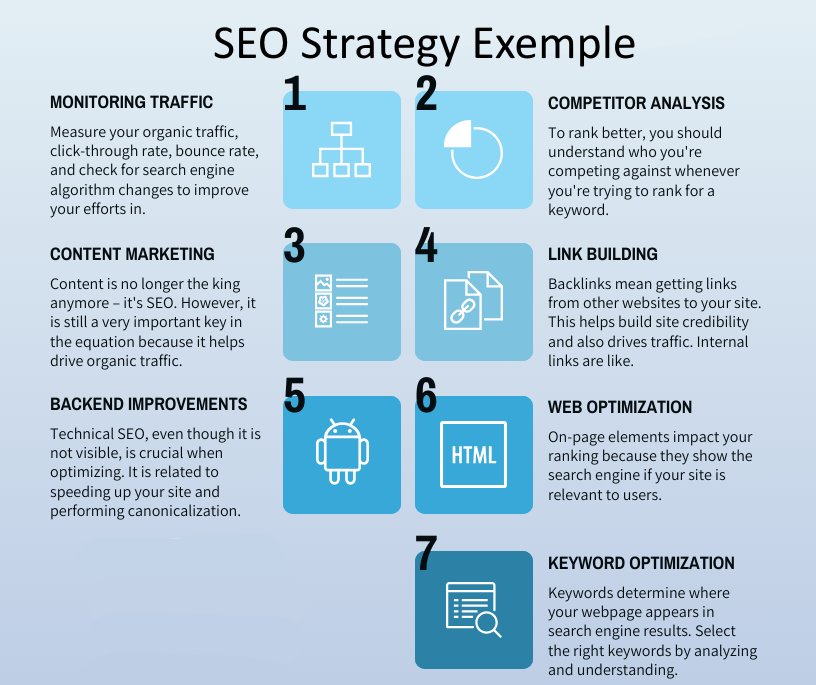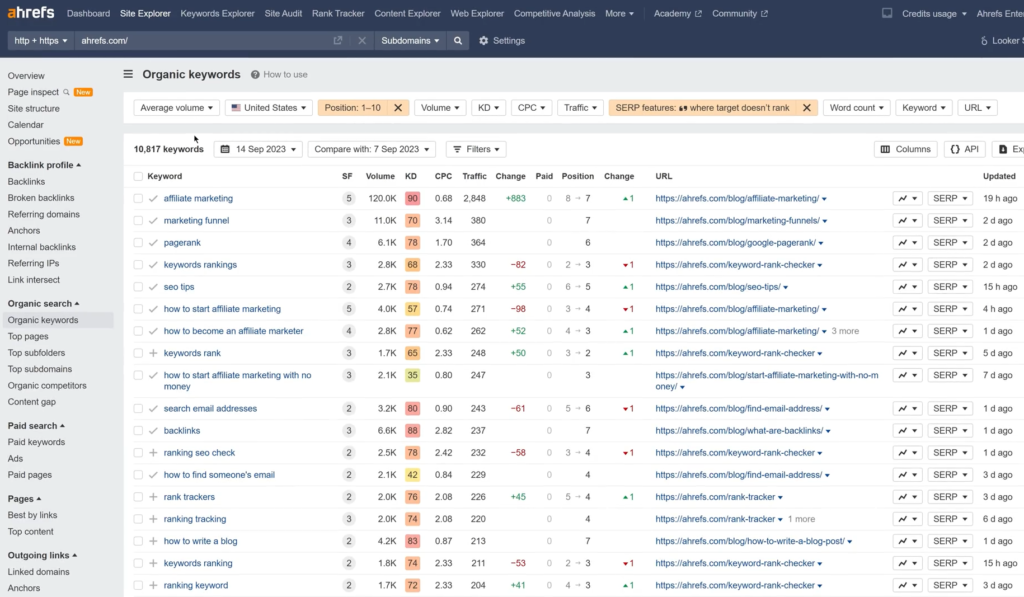A Beginner’s Guide to Blogging in 2024: How to Create a Blog, Find Your Niche, and Skyrocket Your Traffic To get money
 In an era where digital presence is intertwined with success, learning how to create a blog has transitioned from a hobbyist’s pursuit to a strategic career move. Whether it’s for sharing insights, honing writing skills, or generating passive income, the art of blogging opens up a world of opportunities. With practices like search engine optimization (SEO) and social media marketing becoming crucial in reaching wider audiences, establishing a blog is not just about writing—it’s about creating content that resonates and engages.
In an era where digital presence is intertwined with success, learning how to create a blog has transitioned from a hobbyist’s pursuit to a strategic career move. Whether it’s for sharing insights, honing writing skills, or generating passive income, the art of blogging opens up a world of opportunities. With practices like search engine optimization (SEO) and social media marketing becoming crucial in reaching wider audiences, establishing a blog is not just about writing—it’s about creating content that resonates and engages.
This guide will meticulously walk you through the process of choosing a niche that aligns with your passion and expertise, setting up your blog with the right tools and platforms, and crafting quality content that captivates your target audience. Additionally, it will cover essential strategies for marketing your blog, leveraging social media marketing, and employing SEO techniques to increase traffic. The journey will also explore avenues for monetizing your blog through affiliate marketing and other means to turn your blogging endeavor into a source of passive income. By the end of this guide, you will be equipped with the knowledge and tools to launch a successful blog and elevate your digital presence.
Choosing a Niche for your blog
Importance of Finding a Niche
Choosing the right niche is crucial as it defines the focus and direction of a blog, influencing everything from content creation to audience engagement. A well-defined niche helps bloggers establish authority, differentiate from competitors, and attract a dedicated readership interested in specific topics. By focusing on a particular area, bloggers can create more targeted and relevant content, which enhances the overall quality and appeal of the blog.
Steps to Identify a Viable Niche
- Assess Your Passions and Knowledge: Begin by evaluating your interests, knowledge, and experiences. This personal insight ensures that the chosen niche is something you are enthusiastic about and capable of writing extensively on.
- Conduct Market Research: Analyze the market to understand the demand and see what existing blogs are doing. Tools like Google Trends and keyword research can provide insights into popular topics and the level of interest among potential readers.
- Identify Gaps in the Market: Look for areas that are underserved or topics that current blogs do not fully address. This could represent a strategic opportunity to attract readers looking for fresh, unique content.
- Evaluate Monetization Potential: Consider how the niche could be monetized, including advertising, sponsored content, affiliate marketing, or selling digital products. Some niches offer more lucrative opportunities than others.
- Test and Validate: Before fully committing, test the niche with a few blog posts to gauge reader interest and engagement. This can help confirm whether the niche is viable and sustainable long-term.
Analyzing Market Demand and Competition
Understanding market demand and analyzing competition are pivotal in choosing a niche. Market analysis involves studying consumer behavior, demand-supply dynamics, and competitive strategies. It helps in identifying what consumers are currently interested in and the extent of competition in various niches.
- Demand Analysis: Demande analysis evaluate the needs and preferences of potential readers. Tools like keyword research and social media can help determine the topics that are currently trending and what readers are discussing.
- Competitive Analysis: Review what other blogs in potential niches are doing. Analyze their content quality, engagement levels, and how they monetize their platforms. This can provide valuable insights into what works well and what gaps you might fill.
- Unique Angle Exploration: Even within competitive niches, finding a unique angle or sub-niche can provide new opportunities. This involves looking at the niche from a different perspective or covering areas that are not extensively explored by others.
By meticulously analyzing these factors, bloggers can select a niche that not only aligns with their passions but also has a sufficient audience, manageable competition, and potential for profitability.
Setting Up Your Blog
Selecting a CMS (Content Management System)
A Content Management System (CMS) is essential for anyone looking to start a blog without extensive technical knowledge. CMS platforms like WordPress, Wix, and Joomla offer user-friendly interfaces that simplify the process of creating, managing, and publishing digital content. When choosing a CMS, consider factors such as ease of use, customization options, and the level of community support available. WordPress, for example, powers a significant portion of the internet’s websites due to its extensive plugin architecture and theme variety, making it the top CMS for beginners.
Domain Registration and Hosting
The first step in setting up your blog is registering a domain name. This name will serve as your blog’s address on the internet and should be memorable and relevant to your content. It’s advisable to choose a domain name that aligns with your brand and is easy to spell. Most domain registrars offer the ability to search for and purchase domain names, including options for different top-level domains like .com, .info, or .blog.
After securing a domain, the next step is to choose a hosting service. Hosting services store your blog’s data and make it accessible to visitors from around the world. Options range from shared hosting, suitable for smaller blogs, to more robust dedicated servers for larger sites with high traffic. Companies like BlueHost and GoDaddy are popular choices due to their reliability and range of hosting plans.

Design and Customization
Once your CMS and hosting are set up, the next phase is designing your blog. Most CMS platforms offer a range of themes and templates that can be customized to suit your style and needs. These themes dictate the visual layout of your blog, from color schemes to font styles. Utilizing widgets and plugins can further enhance functionality, allowing for additions like social media feeds, contact forms, and SEO tools.
Customizing your blog also involves setting up a navigation structure that is intuitive for your visitors. This includes creating a menu that links to important sections such as ‘About’, ‘Contact’, and various content categories. Ensuring that your blog is mobile-responsive is crucial, as a significant portion of web traffic now comes from mobile devices.
By carefully selecting a CMS, registering a domain, choosing the right hosting, and effectively designing your blog, you can create a professional and engaging online presence that attracts and retains readers.
Creating Quality Content
Planning Your Content
Creating a blog content plan is crucial for meeting the needs of your target audience and achieving your blogging goals. Start by setting SMART goals which are specific, measurable, achievable, relevant, and time-bound. To effectively manage these goals, break them down into smaller, actionable steps, such as quarterly or monthly to-do lists, which can include tasks like creating downloadable ebooks or other content types to boost engagement.
A comprehensive content plan should include a variety of content types such as listicles, podcasts, webinars, and more, ensuring a healthy mix that caters to different reader preferences. Utilize tools and strategies to diversify your idea sources, which can include social listening, exploring Q&A platforms like Reddit and Quora, and collaborating with customer-facing teams to align content with audience needs.
When planning, it’s essential to ensure that your content covers all funnel stages, from increasing brand awareness to converting readers by addressing specific product or service questions. Regularly scheduling and reviewing your content will help identify gaps in your planning and provide opportunities for content repurposing, making distribution and promotion more manageable.
Writing Engaging Blog Posts
Engaging your audience through compelling content is a blend of art and science. Begin by understanding your audience deeply; this includes their demographics, interests, and pain points. Create content that resonates by addressing these pain points, providing valuable insights, and maintaining authenticity to build trust.
Craft headlines that grab attention and make a strong first impression as they are crucial in enticing readers to click through to your content. Keep your content structured and skimmable by using subheadings and bullet points, which not only enhances readability but also improves SEO.
Visual elements like images, videos, and infographics can significantly increase engagement and shareability of your posts. Additionally, ensure your content is optimized for mobile devices and loads quickly to provide a seamless user experience, which is vital in retaining reader interest.
SEO Best Practices
To maximize your blog’s visibility in search engine results, start with thorough keyword research to identify what your audience is searching for. Include these keywords strategically in your content, especially in titles, headings, and throughout the body of your posts, but avoid overuse to prevent penalties for keyword stuffing.
Optimize your blog posts by ensuring all images have descriptive alt texts and by using internal links to guide readers to other relevant content on your site. This not only helps with SEO but also enhances the user experience by providing additional valuable information.
Regularly update your content to keep it fresh and relevant, which search engines favor when ranking content. Also, include a compelling meta description for each post to improve click-through rates from search engine results pages.
By implementing these SEO best practices, you can increase your blog’s organic traffic, improve engagement, and ultimately achieve higher conversion rates.
Marketing Your Blog
Developing a Marketing Plan
Creating a marketing plan is essential for the success of your blog. It involves outlining your publishing schedule, identifying your target audience, conducting content auditing, and planning your social media strategy. Additionally, it should cover paid content advertising, reaching out to influencers, conducting keyword research, analyzing competition, implementing images effectively, ensuring content quality, detailing costs, and setting clear marketing goals. Without a structured plan, efforts can become unfocused, impacting the effectiveness of your marketing budget and potentially making blog marketing efforts futile. A well-thought-out plan not only helps in staying on budget but also ensures that the intended goals are achieved without compromise. Collaborating with influencers, who have a robust community and high authority, can yield incredible results for a one-time investment. Establishing a strong social media presence is necessary for all businesses, with the platform choice depending on whether visual or textual content is more engaging for your audience. Encouraging content sharing through incentives, building a mailing list for direct engagement, setting up PPC campaigns for targeted advertising, and focusing on inbound marketing for natural link-building are crucial strategies.
SEO Strategies

SEO optimization plays a pivotal role in increasing your blog’s visibility. This includes identifying relevant keywords using tools like Google Keyword Planner or SEMrush and optimizing your blog posts for search engines by incorporating these keywords into titles, headings, and meta descriptions. Blog SEO is about creating content that addresses user intent and matches the solutions people are searching for online. This involves focusing on evergreen content, analyzing top search results, writing valuable content, using SEO-friendly images, optimizing descriptions and URLs, and building both external and internal links. Keeping an eye on your blog’s analytics and staying updated with Google’s algorithm changes are also essential for maintaining and improving your blog’s search engine rankings.
Utilizing Social Media
Social media engagement is crucial for promoting your blog. Sharing your content regularly across platforms like Facebook, Twitter, Instagram, and LinkedIn, using captivating visuals and multimedia, and engaging with your followers can build a strong community around your blog. Each social media platform offers unique opportunities for blog marketing. For example, Facebook’s vast user base makes it a common marketing resource, while X (formerly Twitter) offers unique marketing opportunities despite having fewer users. Distributing your content through social media, online publishing platforms like Medium, and collaborating with industry leaders and influencers can significantly increase your blog’s discoverability. It’s essential to integrate social media with your blog, allowing easy sharing of your content and fostering relationships with other bloggers in your niche for cross-promotion. Joining social communities relevant to your niche and actively participating in discussions can also enhance your blog’s visibility and engagement.
Increasing Blog Traffic
Organic Traffic vs. Paid Traffic
Organic and paid traffic are essential components of a successful blog, each with its unique benefits. Organic traffic refers to visitors who find your blog through search engines without direct payment for visibility. This type of traffic is highly valued for its ability to build trust and authority over time, as it relies on creating high-quality content that aligns with search intent. On the other hand, paid traffic is generated through campaigns on platforms like Google Ads, where visibility is bought, offering quicker results but requiring a continuous investment. The choice between organic and paid traffic strategies should be informed by your goals, with many businesses benefiting from a mix of both to balance immediate visibility with long-term credibility.
| Traffic Type | Cost | Time Until Results | Resources Needed | Conversion Rate | ROI |
|---|---|---|---|---|---|
| Organic | $8,000 – $15,000 / month | 6 months | Strategist, Writer, Web Developer, Graphic Artist, Manager | 2.4% | 748% |
| Paid | $5,000 – $20,000 / month | 2 months | Campaign Manager, Copywriter | 1.3% | 36% |
This table illustrates the main differences between organic and paid traffic campaigns, highlighting the investment and resources required for each, as well as the expected return on investment (ROI).
Leveraging Social Media
Social media platforms offer a powerful avenue to amplify your blog’s reach and engage with a broader audience. To effectively leverage social media, it’s crucial to create a content calendar that balances various types of content, from informative blog posts to engaging visuals and videos. Quality content that provides value to your audience, combined with strategic use of hashtags and engagement with followers, can drive considerable traffic to your blog. Additionally, understanding the nuances of each platform and tailoring your strategy accordingly can enhance your blog’s visibility and attract more visitors. Regular posting, optimizing profiles to reflect your blog’s identity, and engaging with your audience through comments and direct messages are key strategies for building a strong online presence and driving website traffic through social media.
Building an Email List

An email list is an invaluable tool for driving traffic to your blog and fostering a loyal reader base. To build an effective email list, start by choosing a reputable email marketing service and creating a signup form that offers incentives for subscription. Promoting your signup form across your blog and social media channels, along with delivering valuable content to your subscribers, can significantly boost your blog traffic. Personalized calls-to-action and offering exclusive content or discounts are effective strategies for increasing sign-ups. Additionally, leveraging word of mouth by encouraging current subscribers to share your blog with their network can expand your email list and, in turn, your blog’s reach. Regular communication with your subscribers through newsletters that highlight new blog posts or offer exclusive insights can drive a significant increase in blog traffic, as your subscribers are likely to engage with content that resonates with them.
Useful Tools for Blogging
In the competitive landscape of blogging in 2024, having the right tools in your toolkit is essential for standing out and growing a loyal audience. The tools mentioned below streamline the writing process, optimize content for search engines, promote work effectively, and provide valuable insights into blog performance. They are invaluable assets that automate repetitive tasks, saving time and energy for creating high-quality, engaging content.
Content Creation Tools
Content creation tools are indispensable gadgets and apps that enhance a creator’s productivity and organization. They range from ring lights for controlling lighting to photo editing apps that keep creativity flowing. Without these tools, it’s easy to get caught up in the nuances of creating, risking precious time that could be better spent engaging with your community.
- Canva and PicMonkey are popular for creating social media graphics, offering layouts, templates, and design elements to quickly produce high-quality images.
- Unsplash and VistaCreate provide extensive libraries of free high-resolution images and graphic design templates, respectively, aiding in the creation of visuals for blogs and social platforms.
- Dall-E uses AI to generate realistic images and art from descriptions, offering a unique way to create visuals that complement blog content.
SEO Tools
Understanding and applying SEO is crucial for making your blog visible and attractive to both search engines and readers. SEO tools help in improving the quality and quantity of traffic to your blog, building credibility, and enhancing the user experience.
- Semrush and Ahrefs are comprehensive tools for keyword research, site audits, and competitor analysis, helping to bring more traffic to your blog.
- Yoast and RankMath are WordPress SEO plugins that optimize your content directly in the WordPress interface, making them favorites among bloggers for on-page SEO.
- GrowthBar and Surfer SEO offer unique capabilities for content SEO, including AI-driven content creation and optimization, making them perfect for bloggers looking to optimize their content fast.

Analytics and Monitoring Tools
Analytics tools are crucial for understanding blog performance, but not all web analytics tools focus on the information needed for blogs. Tailored reporting that measures blog and content performance specifically provides the right data to showcase the ROI of your content.
- Google Analytics offers comprehensive insights into blog traffic, audience behavior, and content performance, making it a free and invaluable tool for bloggers.
- Hootsuite provides a complete picture of all your social media efforts in one place, including analytics for Instagram, Facebook, and X (formerly Twitter), among others.
- Sprout Social and Buffer are other top contenders for social media analytics tools, offering analytics across major social media platforms and user-friendly dashboards for planning and executing social media strategies.

By investing in these essential blogging tools for writing, promoting, and analyzing your content, you can work more efficiently, produce higher-quality posts, connect with your audience more effectively, and ultimately achieve success in the blogging world.
Monetizing Your Blog
Affiliate Marketing
Affiliate marketing emerges as a lucrative strategy for bloggers aiming to monetize their platforms. By partnering with brands, bloggers earn commissions for product sales initiated through their blog. This performance-based revenue model is especially beneficial when the blogger and the brand share a common target audience, enhancing the likelihood of driving sales. To successfully integrate affiliate marketing, bloggers should align with brands that resonate with their content and audience, ensuring a seamless and authentic promotion of products.
- Identify Your Niche and Target Audience: Understanding your blog’s niche and the interests of your audience is crucial. This alignment ensures the products you promote are of genuine interest to your readers, increasing the chances of conversion.
- Select the Right Affiliate Programs: Choose affiliate programs that offer products aligning with your blog’s content and your audience’s interests. This could involve joining direct brand affiliate programs or platforms that connect bloggers with multiple brands.
- Create High-Quality Content: Quality content is the backbone of successful affiliate marketing. It attracts and retains an audience, providing a platform to naturally incorporate affiliate links.
- Promote Your Blog: Utilizing social media and other channels to promote your blog increases visibility, driving traffic to your site and potentially boosting affiliate sales.
Sponsored Content

Sponsored content offers another avenue for blog monetization, allowing bloggers to partner with brands to create content specifically showcasing a product or service. This form of advertising benefits both the blogger, through direct income, and the brand, through exposure to the blogger’s audience. Key to success is choosing partnerships that align with the blog’s content and the audience’s interests, ensuring authenticity and trust remain intact.
- Finding Brand Partnerships: Proactively reach out to brands that fit your blog’s niche and audience. While some brands may approach bloggers directly, taking the initiative can uncover additional opportunities.
- Creating Authentic Sponsored Content: Focus on producing content that naturally integrates the product or service, offering genuine insights or reviews. This approach maintains reader trust while effectively promoting the brand.
Selling Your Own Products or Services

For bloggers with a loyal following, selling personal products or services directly to the audience presents a highly profitable monetization strategy. Whether it’s merchandise related to the blog’s theme, digital products like e-books, or consulting services, offering products that complement the blog’s content can significantly enhance revenue. The success of this approach hinges on the blogger’s ability to present a compelling value proposition and to maintain the quality content that attracted the audience initially.
- Product Alignment with Blog Content: Ensure the products or services offered are directly related to your blog’s theme, addressing your audience’s needs or interests.
- Value Proposition: Clearly articulate how your product or service benefits the reader, enhancing the likelihood of conversion from reader to customer.
- Maintain Content Quality: Continue producing the high-quality content that attracted your audience to your blog in the first place. This sustains audience engagement and trust, essential for successful sales.
By exploring these monetization strategies, bloggers can transform their passion into a sustainable source of income. Whether through affiliate marketing, sponsored content, or selling personal products and services, the key is to maintain authenticity and alignment with the audience’s interests, ensuring continued engagement and trust.
Conclusion
Embarking on the blogging journey requires a blend of passion, strategy, and adaptability. From selecting a niche that resonates with your interests and expertise, to leveraging SEO and social media marketing to attract and retain a readership, the path to blogging success is multifaceted. This guide has aimed to arm you with the essential knowledge and tools to navigate this landscape, whether your goal is to share insights, establish authority in your field, or generate passive income. Through understanding your audience, crafting quality content, and effectively marketing your blog, you can elevate your digital presence and make a meaningful impact.
As we conclude, remember that the art of blogging is continuously evolving, and staying informed about the latest trends and technologies is crucial. The journey doesn’t stop at launching your blog; it’s about growing with your audience, refining your strategies, and persistently seeking ways to enhance your blog’s value and reach. The potential for success in the blogging world is vast, and with dedication, creativity, and strategic planning, you can achieve remarkable outcomes. Keep exploring, learning, and adapting, and your blogging endeavor may just become your most rewarding venture yet.
FAQs
What are the most popular niches for blogs that attract a lot of traffic?
The top niches in the blogging world that tend to attract significant traffic include:
- Making Money Online: This niche is highly popular, especially among those interested in online income reports and generating revenue through the internet.
- Mommy/Parenting: Mommy blogs have a vast audience, focusing on parenting tips, experiences, and family life.
- Personal Finance: Blogs that offer advice on managing finances, saving money, and investing are in high demand.
- Food: Everyone loves food, and blogs about cooking, recipes, and food reviews are perennially popular.
- Fashion & Beauty: This niche caters to trends, personal style, makeup, and skincare.
- Lifestyle: Lifestyle blogs cover a broad range of topics, including personal development, hobbies, and daily activities.
- Travel: Sharing travel experiences, tips, and destination guides appeals to a wide audience.
- Health & Fitness: Blogs focusing on exercise, wellness, and healthy living are increasingly sought after.
How can a beginner start a blog?
For beginners looking to start a blog, here are 12 essential steps:
- Select a topic you’re passionate about.
- Choose a memorable and relevant name for your blog.
- Register a domain name that matches your blog’s name.
- Find a reliable web hosting service.
- Set up your blog on a platform that suits your needs.
- Create a dedicated email address for your blog.
- Establish social media profiles to promote your blog.
- Install useful plugins to enhance your blog’s functionality and user experience.
How do I initiate a niche blog?
Starting a niche blog involves several key steps:
- Understand your motivation for blogging and map out your goals.
- Conduct thorough research to select a niche that aligns with your interests or expertise.
- Perform keyword and topic research to identify content opportunities.
- Choose a blogging platform that fits your technical and aesthetic needs.
- Select a hosting service that offers reliability and value.
- Design and develop your blog to reflect your niche and personality.
- Create content and establish a strategy for ongoing content management and development.
What criteria should I consider to find a profitable niche for my blog?
Identifying a profitable niche for your blog typically depends on three main factors:
- High Traffic Potential: Look for topics that can attract a large number of visitors based on search traffic estimates.
- Low Keyword Difficulty: Choose niches where you can realistically rank well in search engine results.
- Personal Interest or Expertise: It’s crucial to select a topic that you’re passionate about or have knowledge in, as this will sustain your blogging efforts and help you create engaging content.

Pingback: Why Consistency Is Better Than Motivation
Pingback: Top 11 Ways How to Make Money Online in 2024 ! - Online Profits
Greetings! I found this blog post to be incredibly informative and well-written. Your ability to break down complex topics into easy-to-understand language is truly a gift. Thank you for sharing your knowledge with us. I’m excited to read more of your posts in the future!
Hi! I just finished reading your blog post, and I must say, it was excellent. Your ability to explain complicated concepts in a simple and engaging way is truly remarkable. Thank you for providing such valuable content. I can’t wait to read more from you in the future.
Hi there! Just wanted to let you know how much I enjoyed reading this post. Your approach to the subject was unique and informative. It’s clear that you put a lot of effort into your writing. Keep up the great work, and I can’t wait to see what else you have in store.